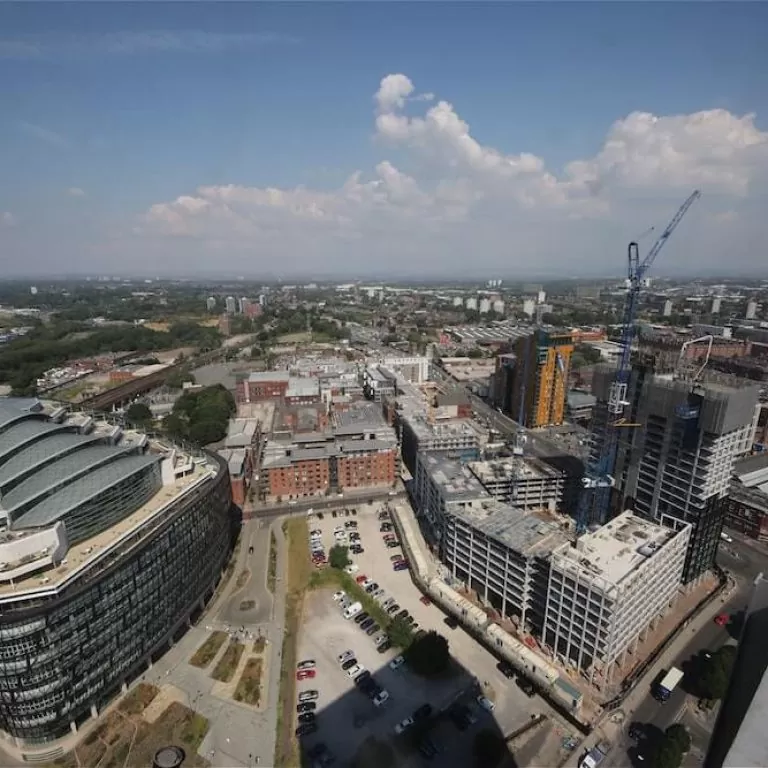
News Concrete in the Construction Industry through Time-Lapse
Concrete in the construction industry has always been an invaluable, cost-effective material as it combines durability, strength and flexibility. Concrete manufacturers have concentrated on developing the material further, so over the last two decades it has become significantly more sustainable, with the aim of creating a net-zero CO2 product by 2050.
Time-lapse videos can showcase the benefits of using concrete in the construction process. With high-resolution 6k footage, a time-lapse video can capture the full detailed build process, showing the advantages of different techniques – especially the ease and speed of using precast concrete on-site.
What are the benefits of using concrete?
Concrete has many benefits, and therefore it is the most prolifically used man-made material in the world. It is made from readily available natural resources, so it can be produced nearly anywhere. There are over 500 types of concrete, from quick setting to high strength, meaning concrete can be tailored to a build’s requirements. With an ability to be moulded whilst wet and to then solidify into a strong durable material, concrete has a high level of flexibility. This means it can be used, either as pre-cast or poured on-site, for a multitude of builds, from homes to hospitals to infrastructure.
Why use precast concrete?
Precast concrete has numerous benefits from enhanced quality, greater sustainability, reduced construction time and less surrounding environmental impact.
Precast concrete is created away from the construction site in a factory setting. As it is prefabricated using precise manufacturing, there are improved finishes to exposed concrete and significantly reduced waste. Concrete can be pre-glazed to make it water-tight prior to delivery, meaning on-site timescales improve. Internal features such as stairs and lift shafts can be made in the factory, which once constructed on-site at the start of a build, gives easier access. Precast concrete also has less impact on the site as fewer deliveries and vehicles make it more eco-friendly.
To show how such a build develops, for Kier Project Capella we created a time-lapse video of their on-site concrete construction. This project used a combination of precast concrete and in-situ concrete. 80% of the frame and façade were factory-built, which resulted in a huge reduction in on-site work.
It was a complex build, with many different elements but with a well-placed fixed single position camera system from Time-Lapse Systems, the off-site architects and project manager were able to monitor the construction in real-time. Once completed, a video edit was produced to capture the whole build, allowing Kier to showcase the construction but also as a reference for future projects.
What are the green credentials of concrete?
Concrete has excellent sustainability credentials in many ways.
Concrete is a local product, which means transportation costs and emissions remain low. In the UK alone, 95% of the concrete is UK produced rather than imported from other parts of the world, keeping the supply chain short and therefore more sustainable.
Concrete can use waste products such as ground granulated furnace flag or fly ash instead of cement, making it more sustainable by recycling these materials.
The ‘whole life’ of a building is also important in its sustainability – from the raw products used, the life span of a building and then what happens during the demolition and recycling of the materials. Due to the long life and durability of concrete, buildings have longevity and are therefore more sustainable. Even when concrete buildings come to the end of use, they can be 100% recycled and concrete absorbs CO2 when broken down.
Another important green credential of concrete is its high thermal mass. Concrete passively regulates the temperature of a building. Concrete absorbs, stores and then slowly releases heat, keeping buildings cooler in summer and warmer in winter. This creates a stable temperature without the use of energy or electricity, reducing heating costs and carbon dioxide emissions.
The green credentials of concrete will only continue to improve as further research is done to help reach the goal of a net-zero CO2 product by 2050.
Why use time-lapse videos?
Time-lapse videos play an important role in highlighting how concrete construction has developed and moved forward. Visually documenting the whole process with high-quality video has numerous benefits. Architects, construction companies, investors and buyers can all see the flexibility, quality and the improved speed of precast concrete in the on-site construction process. Instilling trust in this type of build is essential to keep concrete construction at the forefront of the industry.
As the UK’s leading time-lapse video company, we have the expertise and know-how to produce concrete build time-lapse videos to high specification requirements. Please contact us for more details and to discuss your next project.